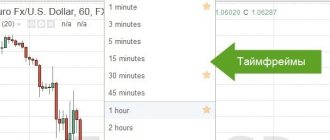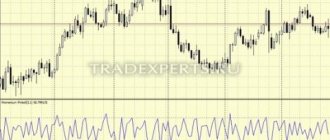Good afternoon, ladies and gentlemen, forex traders.
Today we will talk to you about safe martingale, no matter how paradoxical it may sound.
Martingale is usually associated with something dangerous and extremely unstable. You can call it a time bomb that is ready to explode at any moment on your deposit. However, with proper use of individual elements of martingale, you can significantly improve the profit of your strategy and at the same time reduce the moral burden.
Safe Martingale for Forex
Martingale strategy methodology
Initially, the martingale method was used in roulette betting. As you know, you can bet on events that involve only two outcomes, for example, black or red, even/odd, and so on. Accordingly, adding a little probability theory here, we get the following scenario: the probability of getting red is conditionally ½ (we do not take into account zero and double zero).
Let's say we bet $1 on red, and the first time the wheel spins, the wheel comes up black. On the second round we again bet on red, but now it’s $2, the probability that red will come up is already ¾. If it’s black again, then $4 is bet on the third round, that is, each new round means doubling the bet, the probability is constantly increasing. The profit in any case, be it the second or twenty-second round, will be $1.
And there is only one question here - will there be enough money for the next position . That is, on the player’s side there is mathematics, on the casino’s side - setting its own rules, according to which there is a maximum bet, that is, it will not be possible to put the martingale strategy on stream in this matter. In trading, the essence remains the same, but only instead of bets there are orders that are opened at some distance from each other when the price moves against the desired direction.
The logic of the martingale strategy on Forex is quite simple - if the price moves 100 points into the negative, then to reach zero, a return of these 100 points will be required. And if you open another similar order, then a return of 50 points will be enough. That is, the second order will give +50, the minus of the first at this point will be the same 50, in total the result is a total zero. If the price still moves against the trader after the second order, after another 100 points a new entry is made in accordance with the martingale method. Now it will take not 200, but only 100 points to break even. At the same time, the minus that has formed by this moment will not be 200 points, but 300.
As the price moves further in a negative direction, the loss will grow very quickly, gaining momentum, and at some point it will simply be impossible due to the fact that there will be no free funds. At this moment, the martingale strategy ends and the hassle begins, wondering what will happen next and pure luck.
Sign up for a free individual test lesson with a Forex Academy trader here.
In the Forex market, very long trends often arise that constantly give hints of an end, but invariably continue after a small rollback. Of course, everything depends on the chosen trading instrument, but even volatile ones sometimes produce several days of strong unidirectional movement.
For example, everyone knows the peculiarity of fluctuations in a wide range of the GBP/JPY pair, but at the same time, scrolling through the chart in history, you can note that sometimes the pair begins a trending, non-recoil movement of several hundred points. Not every deposit can withstand such a movement according to the martingale strategy. But few people are ready to use it too conservatively; many believe that it is not worth it. There are also pairs that are initially trending, for example, the Australian dollar and the New Zealand dollar versus the American one. occur over more than ten days , and each daily candle closes in the same direction. Also, you should not expect any sharp pullback after such a movement, because something has been pushing the pair all this time; here, a large-scale consolidation of a horizontal nature will most likely begin, which will practically not be able to help get rid of drawdown positions opened far from it.
As a rule, in order to delay the inevitable loss as much as possible, trading algorithms based on the martingale strategy use either a very small size of each order and significant distances between them, or a forced total stop, usually depending on the remaining funds on the deposit, that is, tied to the balance percentage from the total deposit. In this case, the indicator of trading efficiency and profitability usually suffers . This is explained by the fact that the take of the very first order is usually very small, and the calculation is based on the fact that the market is constantly fluctuating and sooner or later the transactions will go to zero.
On statements, the balance growth line usually appears almost straight, showing strong and stable growth. But everything usually ends very dramatically - with an almost sheer drop and zeroing. Nevertheless, there are still examples of competent and, most importantly, justified application of the martingale strategy.
Click the button to go through a step-by-step guide to the Martingale strategy and master the strategy in 5 simple steps Explore »
PREPARATION FOR A SAFE MARTIN
So, the trading strategy has been selected, a trading account with the necessary leverage is available. We continue to prepare our safe Martingale. Let's focus on the following key elements:
- Using stop loss orders in trading
For some reason, most traders believe that trading using the Martingale method occurs without stop losses. Need I say that stop loss is insurance against a large loss and trading without them is stupid and dangerous? Stop-loss orders can and even should be used in the Martingale system.
- Determining a series of losing trades in a trading strategy
Everyone knows that there is no Grail in Forex, and even the most profitable trading strategy suffers from losing trades. Our task is to determine the average series of losing trades. Please note that this is not the maximum value, but rather the average number of consecutive losing trades during the test period.
The test period requires an individual approach. If the trading strategy is intended for trading on the M5 interval, then the test period should be at least 1-2 months. If trading is meant on the daily timeframe, then the testing period is already several years.
To optimize testing of a trading strategy, you can use one of the utilities, of which there are a great many on Forex resources.
About the advantages of the Martingale system
The market lives, moves, constantly changing its direction. Predicting or calculating its movement in the future is a difficult task for a trader. In Martingale trading, the number of open transactions a trader can have is limited only by the size of his “non-rubber” deposit. At the same time, if, when opening trades, he did not guess the direction of the market, one price rollback can bring him profit with compensation for all these losses. This is the main advantage of the Martingale strategy. There is no concept of total “currency depreciation” in the financial market; however, long-term operation of this system is not recommended.
So, from all of the above, we can draw the following conclusions about the advantages of trading using Martingale:
1. Trend entry:
- provided that the trader enters the market following the trend at a low rate, he can take the planned profit;
Entry point to buy on a daily uptrend.
- with a sudden trend breakout in the direction of its current trend, the trader’s chances of making a good profit increase significantly;
- When a trend breaks out in the opposite direction, the Martingale strategy allows him to wait out the price pullback in order to remain in profit or close the transaction without a loss.
2. Entry against the trend:
- when trading against the trend with a minimum lot (for example, $0.01 or $0.001), the trader also has the opportunity to wait for the market to reverse and exit with a profit;
- if the price drawdown is too deep, he can close with zero profit, then his trade will not be considered unprofitable.
Click the button to go through a step-by-step guide to the Martingale strategy and master the strategy in 5 simple steps Explore »
3. Profit at interest rates:
- The Martingale strategy on Forex allows you to make a profit on the difference in interest rates, compensating for losses through interest income. In this case, he needs to trade currency pairs in a direction that will provide him with a positive swap. This will guarantee a profit on the deposit.
- To buy, you should choose a currency with a high interest rate, and sell the one with the lowest interest rate. The income will be greater if you open several lots at once using this principle.
Making a profit on the difference in rates of the EUR/JPY pair.
4. Combinatoriality:
The Martingale strategy can be used as an independent system, but does not prohibit the trader from simultaneously using other trading strategies:
- as an independent method, it does not require the trader to use any algorithms or specific skills;
- As an additional system, it significantly increases the likelihood of making greater profits, but the trader must also have certain skills.
In its pure form, this system does not attract professional traders; they sometimes use it as an auxiliary method. For example, professionals often use the Martingale method in conjunction with one of their effective trading strategies.
Forex Academy suggests using the “Sniper” strategy as the main strategy. Simple and very effective, this strategy is guaranteed to increase your deposit by over 56% in just 1 month. Your click on the link below is a signal to us to send you this unique strategy for free.
Get a complete special course on the Sniper trading system here.
Limited "Dogon"
As can be seen from the previous examples, the pain point of the “Catch-up” game is long losing streaks. Indeed, it’s ridiculous for the sake of earning 100 rubles. risk a quarter of the bank, for 25,600 rubles, as in the example. For this reason, a cut or limited Martingale is practiced. They do not raise rates until the loss is complete. For example, they set a limit until step 4. If there is no winning before this move, they roll back to the original amount. If the distance cross-country ability is high, then this allows you to compensate for such micro-failures. If you persist and raise to the limit, you can lose the entire bank on one “black streak”.
About risks
When calculating the desired profit and the minimum bet, the trader must be able to control his “appetite”. Greed destroys even the best intentions - remember this! Practice shows that this trading system most often “eats” the deposit, especially if it is used for a long time by inexperienced traders. It’s not for nothing that Martingale is classified as a progressive and most dangerous strategy used in Forex.
For a novice trader, it seems simple and ideal for making easy profits. If he has a strong deposit reserve and fulfills all the conditions of this method, then he can count on profitable transactions. Otherwise, his deposit will quickly melt away. The Martingale strategy can either enrich or ruin a trader.
To reduce the pressure on the deposit, traders resort to various tricks and techniques:
- if you win, with each subsequent transaction they increase the bet by the coefficient not 2 times, but less;
- after a series of unsuccessful transactions, they change the goal (they refuse to make a profit and close at zero);
- in case of unsuccessful entry into the market or trading against the trend, do not open new transactions until unsuccessful open positions are closed without loss.
Deposit loss due to incorrect entry into the market.
This trading method is not suitable for every trader. It should be especially feared by those who cannot restrain themselves from the desire to make huge profits in any way.
Click the button to go through a step-by-step guide to the Martingale strategy and master the strategy in 5 simple steps Explore »
How to include zeroing of the working bank in the mathematical model?
Since one of the features of the Martingale system is the periodic reset of the working bank, it would be advisable to initially plan for this development of events in order to come out with a profit in the long run. How to do it?
Not difficult. If more than a one-time increase in the bank takes place before the calculated drain of the bank, such a model can already be considered winning. This means that if the starting bank increases by 1 or more times (for example, twice), after which it is scheduled to be reset to zero, then such a scheme will still bring profit to the player.
The simplest example:
Starting bank $100.
With the help of Martingale, we triple the bank every cycle and work on half (to be on the safe side) of the budget. This will give:
- 1st cycle: win $150, lose $50. In the bank - $100 + $50 = $150 (take half for the next cycle, i.e. $75)
- 2nd cycle: win $225, lose $75. In the bank - $75 + $150 = $225
- and so on.
Using the Martingale strategy in practice
If you follow a certain algorithm of actions, then this method will slowly but surely help you increase your capital. The simplest Martingale trading algorithm consists of several steps:
- We choose a currency pair (remember the interest rates of each currency).
- Determine the direction of the trend.
- We are looking for a suitable entry point (even beginners know a few simple conditions for entering the market).
- We calculate the minimum lot size (based on the deposit amount).
- We enter the market (open a trade following the trend).
- Be sure to set Stop Loss and Take Profit - no more than 10 points in both directions. In any situation, it turns out that the expected profit and the predicted loss are “equal”. The difference is that when the price moves in the desired direction, the trader can move the Take Profit order to make his profit. In case of unsuccessful entry, he will receive a drawdown of the deposit according to Stop Loss.
- If you lose, the martingale strategy requires you to open a new position with a bet twice as large as the previous bet.
- If we win, we enter the market, reducing the bet to its original minimum volume.
Some important tips for using the system:
- This trading strategy does not provide for the transfer of transactions to the next day. Trade exclusively within one business day.
- Enter the market taking into account the average intraday price.
- A smaller bet amount takes away a smaller portion of the deposit, preserving its strength.
- Follow the calculation where: deposit = cost of 1 point X 2. The very first lot in price should not exceed the price of the point.
- Place protective orders on time and correctly so that if you enter the market unsuccessfully, the Martingale strategy will not lead you to a big loss.
- Don’t forget to move the boundary of the protective pending order in the direction in which the price is moving. This is a way to increase your profits.
Profitable vehicle + high leverage
Before we start discussing the elements of martingale, it is worth saying that you need an initially profitable strategy. It must be profitable without martingale elements, otherwise nothing will work.
These mini-elements will help us improve its profitability and reduce the moral burden on the trader. But without an initially profitable strategy, this will not be possible.
In addition, we will need a lot of leverage. With adequate money management, 1:100 is, in principle, quite enough. Large leverage will not cause harm in your trading, of course, if it is not abused.
Let's say you have a profitable strategy and high leverage. Then move on to the next point.
Results
Today we learned that the Martingale strategy gives new and inexperienced traders the opportunity to quickly start on Forex. The most important thing is that they do not require any special knowledge, certain efforts, or practical skills. You just need to strictly adhere to a specific algorithm of actions. Trading without effort and with a small profit is suitable for a beginner, but will not satisfy the ambitions of an experienced player. To make a monthly profit of more than 50% of the deposit, you need to learn and use more complex trading strategies.
Flaws
If we compare the “Flat” and “Dogon” strategies, then their bank growth rate is comparable. During winning bets, profit grows slowly, since a small part of the original deposit is used per iteration. At the same time, the risks of losing your entire account using Martingale are much higher. As was shown in the examples, with those initial steps, 9-11 steps are enough to completely reset the balance. With a larger bet size and lower odds, the loss will happen even faster. With a similar losing streak with Flat, the player loses only 9-11% of the bank, since it does not depend on the seriality of the results.
WHAT TO DO IF EVERYTHING IS NOT SO SMOOTH?
What if the third trade, opened with a volume of 2 lots, were closed with a stop loss with a loss, the price would continue to rise, and a sell signal would appear again? You need to open a sell position again, but with what volume?
Classic Martingale implies a further increase in the volume of positions, however, this approach is not suitable for us due to the very high risk.
During testing, we found out that the average series of losing trades is 3. Accordingly, we can open only 3 trades. The fourth time does not correspond to the standard situation, so it is better not to take risks. In this case, you can open a sell trade with a reduced volume of 1.5 lots, or immediately return to the original volume of 1 lot and trade it until the trading strategy returns to the usual ratio of profitable and losing trades.
How do the basic settings of the monkeys affect each other?
When you change one of the main parameters in martingale advisors, other basic settings will automatically change - regardless of your desire, if you want - physics cannot be deceived, just like the market. Below we will look at everything using specific examples. If you are just starting to work with this type of advisor, I directly recommend that you open several demo accounts and conduct experiments on your own with a variety of (mutually opposite) monkey settings in order to see and understand in practice how and what works there.
Exhibitor lot. By increasing the multiplier size to 2, 2.5, 3 – we reduce the distance to take profit – the easier and faster the advisor can close the order grid. The other side of the coin is that we are increasing the load on the deposit - there are too many lots that require collateral and suffer drawdown when the market moves against you. If there is no rollback, it will be easier for the advisor with orders with a large lot to merge. By reducing it, we reduce the risks - but the distance to take profit also increases - in this case, a large movement in the market will be required for you to make a profit. The market simply may not pass so many points and your grid will remain hanging until better times. Number of orders. By increasing this parameter, the advisor can entangle the entire non-recoil trend with orders, and with a small rollback/correction, it will quickly close the entire grid of orders in positive territory. But there is also a downside - if there is no rollback, and the advisor opened many orders, the loss of the deposit is more likely. By reducing the number of orders, we can secure the deposit, the drawdown will decrease, but at the most inopportune moment, the advisor will not have enough of one (the last in the grid) order with the largest lot - and he will not be able to close the network of orders in plus - leaving a floating loss hanging for an indefinite time. Step between orders. If we increase it, we will increase the expert’s resistance to non-recoil trends and increase its survivability, but to close the order grid in plus, we will need to go through more points to take profit, no matter how many points we reduce the TP value in the settings. If you take a very small step, then a small rollback will be required to close the order grid. However, if this does not happen - the advisor will open the entire grid of orders and the trend will continue - draining the deposit will be inevitable. Take profit size. By increasing it, you can theoretically earn more, but the price may simply not reach the set profit level, the rollback will end and the trend will continue when the advisor has a large grid of orders - and the likelihood of a drain increases. If you reduce this parameter, the size of the profit will also decrease, but the order grids will also close faster, with smaller rollbacks - which can reduce risks. However, the profitability of an owl will also be lower. Everything is individual here and you need to conduct experiments and compare - what may work well with one adviser, on the contrary, will interfere with the work with another.
Usually in monkeys the take profit is set the same for all grid orders:
That is, when the price reaches the specified value, all orders are closed at once - some positive, some negative. As a rule, the very first orders are in the red - with small lots, and the orders themselves can be 100 and 200 points behind everyone else - the adviser has averaged out so much and it is clear that the price for the sake of these orders will not return back (or maybe it will return... after year, another). But the fattest orders, with the largest lot sizes, bring the biggest profits and cover all losses - because the advisor’s task is to close the grid of orders with a profit.
What to do with all this in the end? If you have a bad idea even after testing on demo accounts, then at least use the set files for the experts that come with them. Naturally, we do not forget all the recommendations of the developers/authors of the sets - we install the bot on the desired currency pair and timeframe. We also have material on our website on working with advisor set files – you can find it here.
Another way is to independently test the advisor in various programs designed for testing manual and automatic strategies. Well, then the logical conclusion follows - testing your settings on demo/cent accounts, on the real market - with spreads, commissions, slippages, connection breaks and other delights. This will be a very expensive path - but also the best one in terms of understanding the work of advisers and gaining experience. You can’t do this without knowledge of a computer, various programs... This path is not for everyone.











